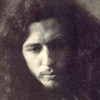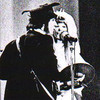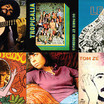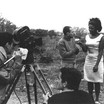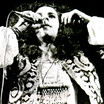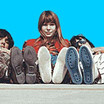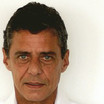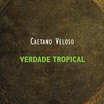Ruídos pulsativos

Geléia Geral
Concrete poetry arose in Brazil in the second half of the 50s as a movement of the literary avant-garde. In 1958, the poets Haroldo de Campos, Augusto de Campos and Décio Pignatari, launched a manifesto entitled “Pilot Plan for Concrete Poetry” in the fourth issue of the magazine Noigandres. The aim was to question the traditional form of poetry structured on rhyme and meter, decreeing an end to verse and suggesting its substitution by new structures based on the spatial distribution of the words according to geometric alignment. In their search for a new form of articulating poetic expression, the Concretists would concentrate their concerns on the materiality of the word, on its sonorous (musical) and graphic (visual) qualities.

Concrete poetry redeemed and radicalized the previous formalistic proposals permeating the avant-garde movements of the beginning of the century. The leitmotif of the Concretists was the distich of the Russian poet of the turn of the century, Maiakovski: “Without revolutionary form, there is no revolutionary art”. Its principal influences were Mallarmé, James Joyce, Maiakóvski, Souzândrade, Ezra Pound, e.e. cummings, João Cabral de Melo Neto and Oswald de Andrade.
As well as poets, Décio Pignatari and the Campos brothers were music critics for the big newspapers, giving intellectual backing to the Tropicalists’ innovations in popular music during the 60s. For them, the Tropicalist project was attuned to their aspirations, above all for acting in that band of experimentalism open to modern information. The song “Batmacumba”, by Gilberto Gil and Caetano Veloso, can be considered an example of the direct influence of concrete poetry on their work.
One of the principal points of intersection between the two groups was Oswaldian anthropophagy. The poet Oswald de Andrade, fundamental to the Concretists, came to be similarly important to the Tropicalists after the staging of O Rei da Vela (The Candle King) by José Celso Martinez Corrêa. This common interest sealed the creative interaction between the groups.






